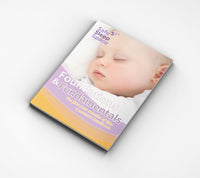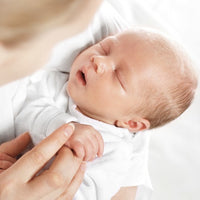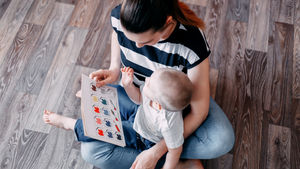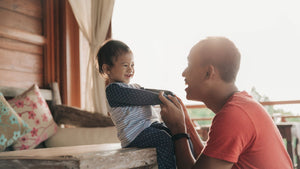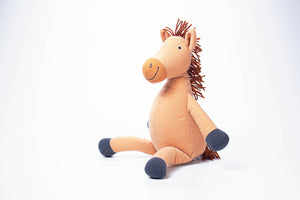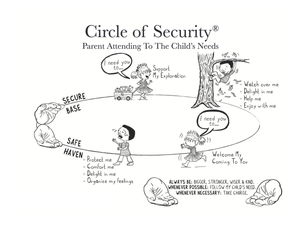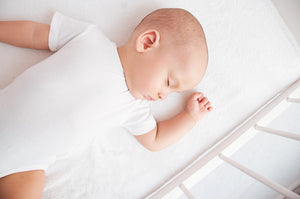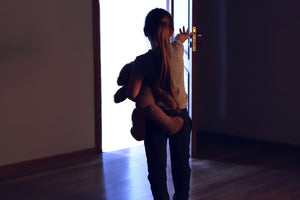Sleepwalking in Children

Key points
- Sleepwalking is common in children and most outgrow it.
- When a child is sleepwalking, they’re not awake.
- Sleepwalking happens in a phase between awake and asleep.
- It’s important to make sure your child can’t hurt themselves when they’re sleepwalking.
- Don’t make a fuss the next day about your child’s sleepwalking – they cannot control it.
How common is sleepwalking?
Sleepwalking is reasonably common in children – around 1/3 will sleepwalk at some stage. The most common age for sleepwalking to happen is between four to eight years of age. Most children outgrow it without any specific treatment or management.
Parents who were sleepwalkers themselves are more likely to see the same behaviour in their own children.
What is sleepwalking?
Sleepwalking, or somnambulance, is a behaviour which happens during a child’s sleep. The child gets up out of bed and walks around their room or the house. Sleepwalking is not under the child’s control and they’re not aware they’re doing it. Often, young children will walk towards a light or their parent’s room. Rarely, children will let themselves out of the house and walk around outside.
Sleepwalking generally happens in the early part of the night, though some children have a couple of episodes of walking around each night. Sleepwalking may happen only occasionally – once a month, or it can happen as frequently as every night.
What causes sleepwalking?
Sleep is still an emerging area of research for scientists. Although it’s an incredibly important state, there is still a lot we don’t understand about the intricacies of sleep. It does appear though, that sleepwalking happens in an in-between ‘window’ of being awake and asleep.
After initially falling asleep, children transition from deep to light sleep. And it is in this phase that sleepwalking generally happens.
When sleepwalking, children are sufficiently awake to get up and move around, but their conscious brain is still not fully awake and alert. When children are sick, especially with a fever, sleepwalking can be more common. During times of anxiety and change, it can also peak.
Children who have breathing problems such as obstructive sleep apnoea or epilepsy are at greater risk of sleepwalking. Sometimes children are disturbed in their sleep by a full bladder or bowel and it’s this discomfort which causes them to transition out of a deep phase of sleep.
What is my child likely to do when they’re sleepwalking?
Young children who are still sleeping in a cot may stand up and walk around the cot, even though they’re still asleep. Older children may get up off their bed, take off their clothes, wee on the floor or play a little with their toys. Some children will shout or call out, may try to have a conversation but are talking nonsense.
Sometimes during sleepwalking, the child’s eyes will be open but their eyes appear glazed over. Because they’re asleep, children don’t tend to recognise their parents or make much sense if they start talking.
Children can also become upset when they’re sleepwalking and need a little reassurance and comforting.
What is the best way to manage my child’s sleepwalking?
There is no particular treatment to manage sleepwalking. It does not have any long-term effects and is not an indication for problems with sleep or behaviour in the future. As sleeping matures, with time, most children outgrow sleepwalking.
It can sometimes help to keep a diary or record of a child’s sleepwalking. Often, a run of late nights and being overtired means that sleepwalking is more likely. Moving your child’s bedtime earlier could make a difference in the frequency of their sleepwalking if they’re overtired when they go to bed.
What to do when your child is sleepwalking:
- Try not to wake them up. It will help for you to stay calm and reassuring as you gently redirect your child back to their bed.
- Stick to a regular bedtime routine which could help to avoid your child becoming overtired.
- Make sure your child’s room and the house are safe and there’s nothing which could harm them.
- Lock windows and doors if they are getting out of the house when they’re sleepwalking. Use gates across stairs.
- Keep them on the bottom bunk if they’re sleeping in a bunk bed.
- Keep any discussion about their sleepwalking to a minimum the next day. Older children especially can become self-conscious about it and get teased by their siblings. Remember, sleepwalking happens in a phase of sleep where they don’t know they’re doing it.
- Consider using a monitor or an alarm to wake you if your child climbs out of bed and is sleepwalking. It’s important they’re not left to wander around their room or the house unattended.
- If your child is having sleepovers or going away, let their carers know that they may sleepwalk and what they can expect.
Should I have my child seen by a doctor?
You may choose to have your child checked by a doctor if you’re concerned about their sleepwalking. In the absence of any other issues with their growth or development, it’s generally fair to assume that sleepwalking is a developmental and age-related issue which will resolve in time.
If, however, your child’s sleepwalking is happening every night or they’re disturbing other people in the family, you may want to discuss some behaviour strategies or medication with your GP or paediatrician.
About the Author:
Written for Safe Sleep Space by Jane Barry. Jane has qualifications in general, paediatric, immunisation, midwifery and child health nursing. She holds a Bachelor Degree in Applied Science (Nursing) and has almost 35 years specialist experience in child health nursing. She is a member of a number of professionally affiliated organisations including AHPRA, The Australasian Medical Writer’s Association and Australian College of Children and Young People’s Nurses.
References
Raising Children Network | Sleepwalking
Pregnancy Birth Baby | Sleepwalking in Children
